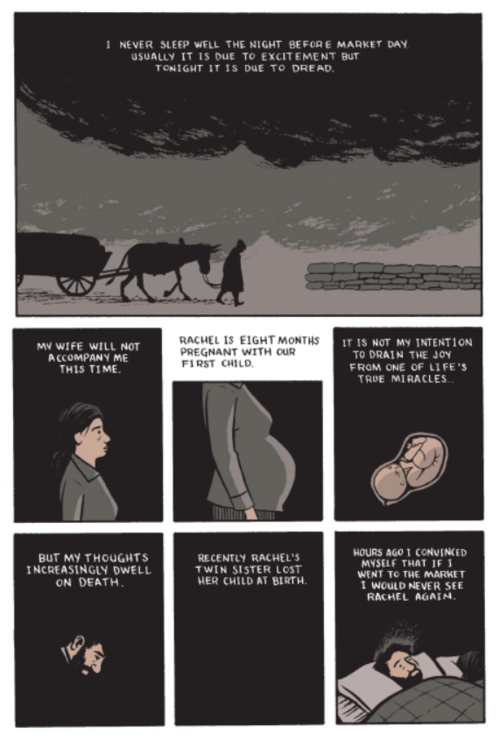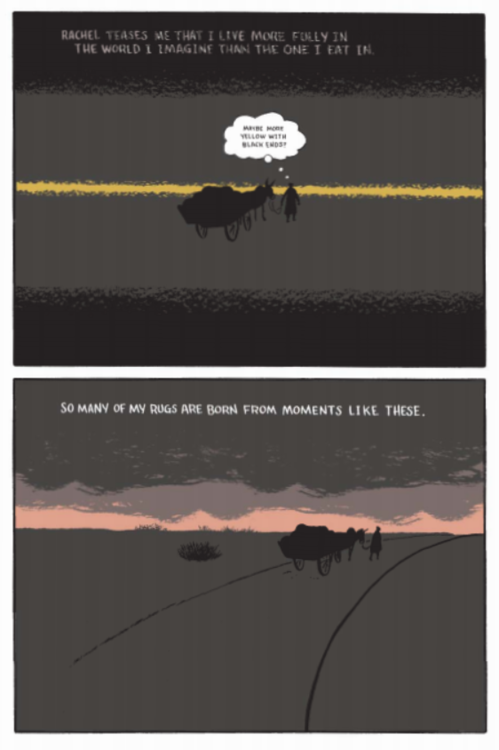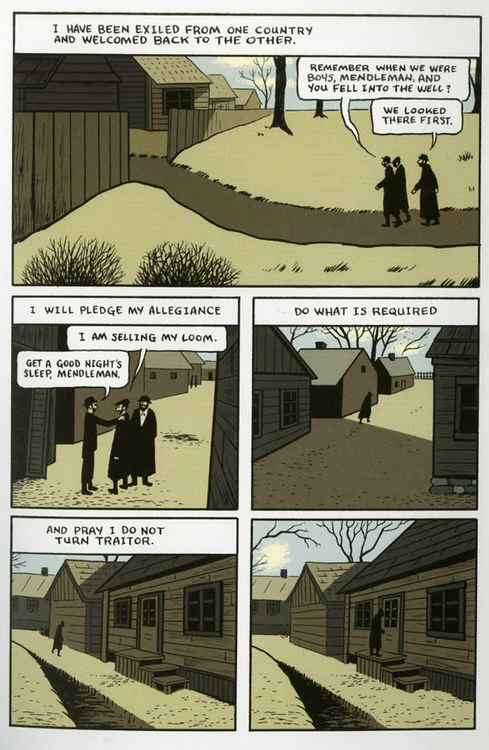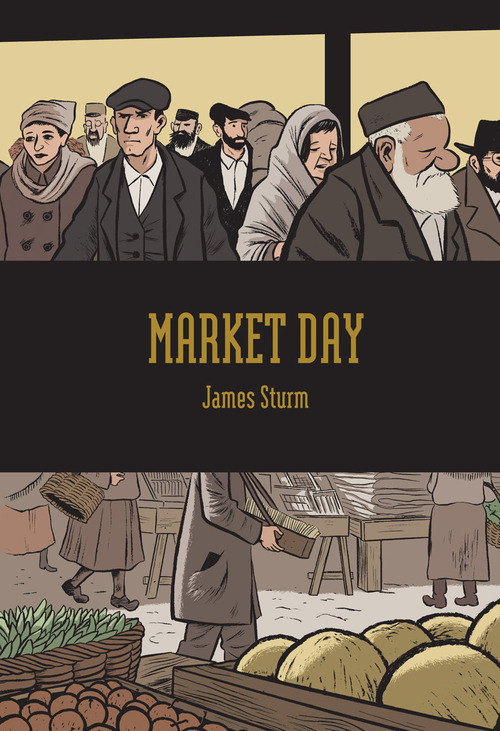
James Sturm’s Market Day is one of the defining graphic novels of 2010. It follows a shetl artisan, Mendleman, at the turn of the Industrial Revolution. He has built a life around making high quality rugs. The financial stability of his family hinges on selling 8 rugs he has made. When he finds out that the retailer with whom he has cultivated a strong business relationship has decided to turn his business over to his son-in-law who doesn’t have the same eye for quality, Mendleman’s world unravels.

One of the most prominent features of Market Day is the uncertainty of its ending. Mendleman has sold his donkey and cart, the only way to get rugs to market. He has sworn to sell his loom. But Sturm uses oblique language to suggest rather than tell us that Mendleman may continue to be an artisan despite the cheaper, lower quality competition. It strikes me that many people in the illustration and comics world have this concern – young artists giving away work or not knowing the value of their work devalues the work of the collected industry. The fact that many people are looking to hire illustrators, designers, and other artists for “no cash, plenty of exposure” is proof of this. How market forces impact an artisan’s ability to make a living is a very central concern in an artistic industry like comics, and I think Sturm strikes a nerve.

At the same time, the artisan’s pride is a driving force in Mendleman’s decision-making, as shown throughout the book. His posture changes, the background brightens after he walks away from a positive encounter with a rabbi he knows at the market. But Mendleman also curses his pride, becomes angry that he has built “a house of cards” as an artisan, and swears to give up his trade. Like artists today, may swear away his craft – but can he actually abandon it despite the forces of the market that rage against him? Do we stop doing what we love to get a more stable job in some other industry? Do we trade our dreams for a stable income? Or do we tough it out and hope for the best? What drives us to throw it all on the line? Mendleman stands in for the everyman, tossing these questions around as he tries to sell his rugs.

Mendelman’s anxiety is a key building block of Market Day. Mendleman works himself into fits at the slightest toss or turn. The anxiety is understandable given the context of the story, but I think it paints a picture of an anxious present. Market Day was written in the heart of the Great Recession, a point in time when financial constraints on artists and artisans was very great. They are still pretty great, but maybe hopefully getting better. In some ways, Sturm pulls on the market forces of the Old World to tell a current story. The anxiety that Mendleman’s work isn’t going to pay to support his family is a powerful driving force in Market Day, and it echoes the concerns of millions of people right now, trying to make “it” work, whatever “it” might be.
Market Day was published by Drawn & Quarterly James Sturm has published other work with D&Q, including The Golem’s Mighty Swing. James Sturm co-founded the Center for Cartoon Studies and his most recent work is a series of books called Adventures in Cartooning, published by First Second. You can find more information about Market Day here.
Sequential State is made possible in part by user subscriptions; you subscribe to the site on Patreon for as little as a dollar a month, and in return, you get additional content; it’s that simple. Your support helps pay cartoonists for illustration work, and helps keep Sequential State independent and ad-free. And if you’re not into monthly subscriptions, you can also now donate to the site on Ko-Fi.com. Thanks!


One response to “The Anxiety of James Sturm’s Market Day”
[…] work examines. Market Day, for instance, was about a Jewish rugmaker, yes, but it was actually a rumination on depression and anxiety as an artist. The story of Market Day is composed to extract the most value as possible from the thematic […]